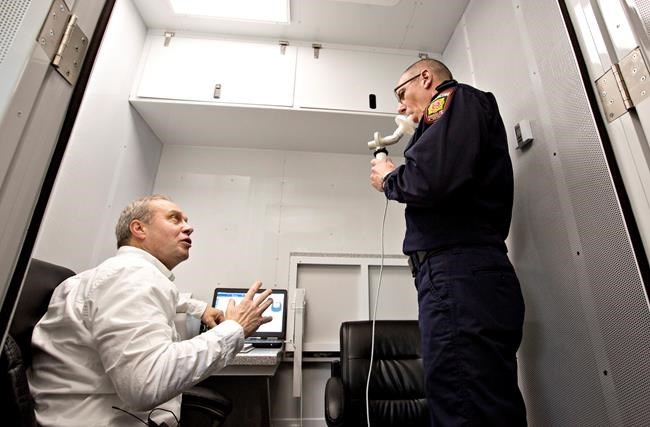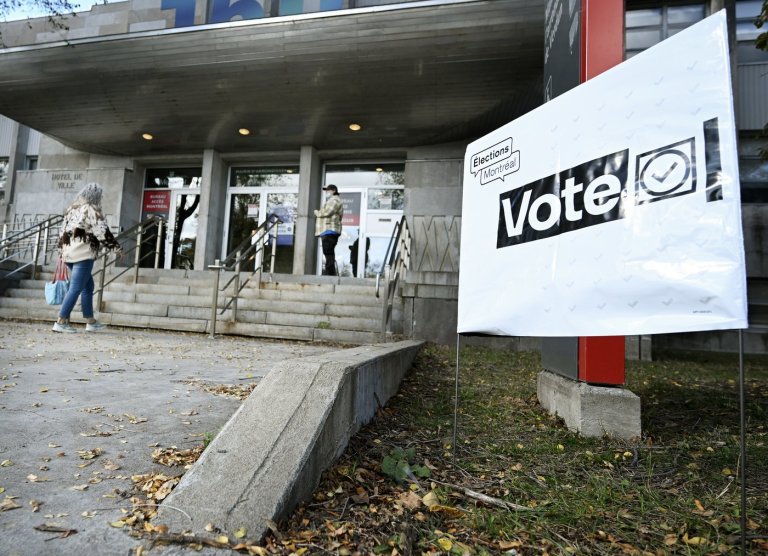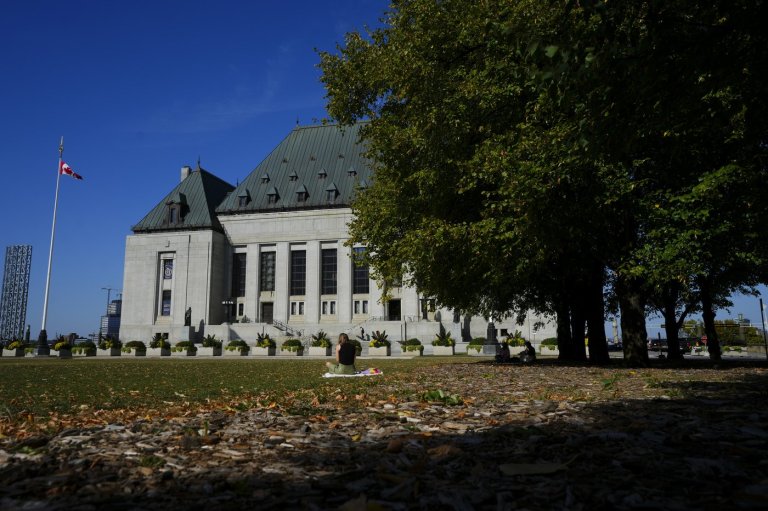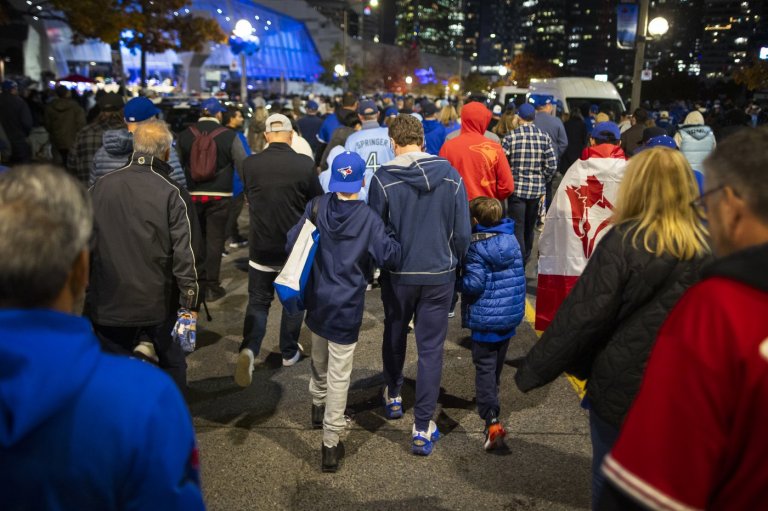University researcher tracking health of firefighters in Fort McMurray blaze

SHERWOOD PARK, Alta. – A researcher has started tracking the health of firefighters helping battle the massive wildfire in Fort McMurray, Alta.
Nicola Cherry, an occupational epidemiologist at the University of Alberta, is taking blood, urine and breath samples of firefighters as they return from northeastern Alberta in a mobile laboratory she received two weeks ago.
The van has been sitting this week in Sherwood Park, east of Edmonton, and Cherry has so far tested about 55 firefighters from the area.
“They said the smoke was unbelievably dense — worse than anything they’d ever seen — and they are concerned about their health from that,” she said.
The fire, now covering more than 4,200 square kilometres, spread into the city on May 3, sending more than 80,000 residents fleeing for their safety. It destroyed about 2,400 buildings and continues to burn in the region.
Hundreds of firefighters are battling the blaze.
Government officials have said smoke from the fire is a safety issue. The air quality health index, measured on a scale of one to 10, was at 38 on Monday. It hit 51 early Wednesday but dipped down to 11 later in the day.
Hundreds of other workers had been in Fort McMurray, working to restore utilities and reopen the hospital, but most were evacuated earlier this week. Alberta Premier Rachel Notley said Wednesday that anyone still working in the community is wearing “appropriate masks.”
Cherry said the index score doesn’t really demonstrate the level of danger for firefighters, who are working much closer to the flames. Although they do wear respirators, they typically remove their equipment while on breaks.
Some of the firefighters in the study have complained about breathing problems, heat stroke and fatigue, Cherry said. Long-term effects will be recorded later.
She plans to do followups with the study group in three months and perhaps longer.
“What we’re aiming to do is see if any of the breathing problems they’re having now are associated with a particular pattern — types of exposure or patterns of exposure — during the fire,” she said.
“Are those who worked for 15 hours at a stretch more likely to get long-term respiratory problems than somebody who only worked for eight hours? Or is somebody who was wearing one type of respiratory protection less likely than somebody who was wearing a different type or none at all?”
She said she’s not sure yet how many firefighters will be part of the study or if she’ll move the lab to another location.
It would also have been good to test crews before their first shifts to the Fort McMurray region. But it wasn’t possible, she said.
“It was all obviously done in great haste. We weren’t expecting the fire.”
— by Chris Purdy in Edmonton
Join the Conversation!
Want to share your thoughts, add context, or connect with others in your community?
You must be logged in to post a comment.


















